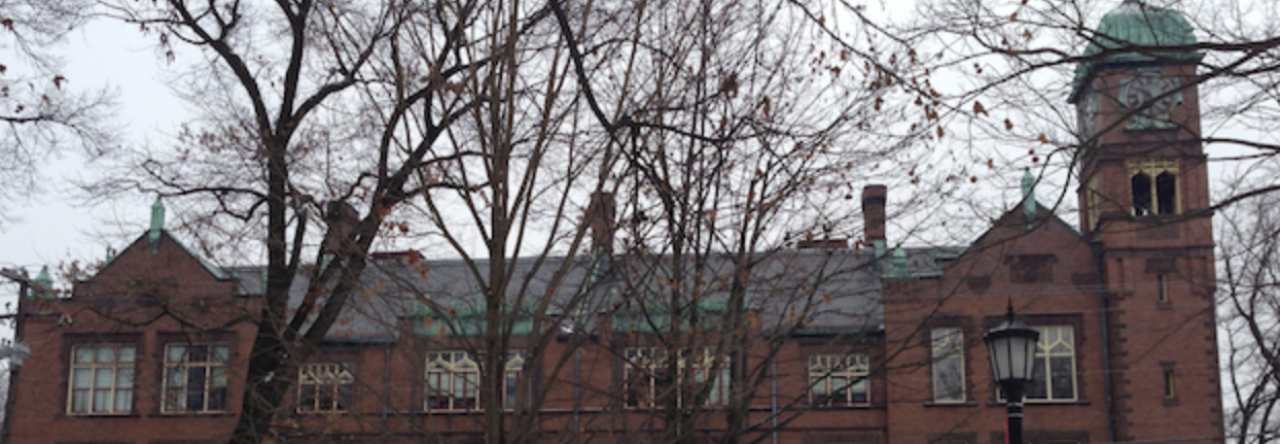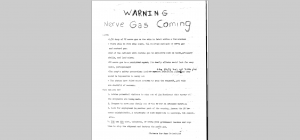
Professor Todd Wronski
When Dickinson College Theatre Professor Todd Wronski was a thirteen year old boy, he witnessed an odd sight: coming silently down the steps of his family’s Mankato, Minnesota home to begin his paper route for the day, he spotted his parents huddled around a small television set. This was strange to Todd; not only were his parents not supposed to be awake this early, but they rarely watched the television that Wronski’s father had bought expressly to “watch Adlai Stevenson lose to that Eisenhower.”[1] The house ought to have been silent and dark in the comfort of the brisk summer morning, and yet here his parents were, their eyes raptly focused on the screen. It was just before six o’ clock on the morning of June 6th, 1968; Robert F. Kennedy had just been assassinated.
The murder of Bobby Kennedy set a marker for the beginning of a period of civil unrest in American history practically unmatched by any other. Coming shortly after the assassination of Rev. Martin Luther King Jr., as well as in the midst of the controversial Vietnam War, the attack seemed to solidify many Americans’ belief that society was destabilizing before their very eyes. Historian H.W. Brands illustrated this frightful atmosphere in his assertion that the political murders, widespread rioting, and demoralizing war made the liberal vision of peaceful conflict resolution “impossible to maintain.” Yet the stirring testimony of Professor Wronski regarding the social climate in his hometown following the assassination through the Cambodian bombing campaign in the spring of 1970 adds a new dimension to the turbulent period – the perspectives of average, small-town Americans and their reactions to these larger events. Wronski’s teenage years, which stretch across the most violent periods of the Vietnam War and its subsequent protests, help to represent the development of an American cynicism which followed what Brands called the effective death of the liberal vision.[2]
Wronski perhaps captured the transition from the carefree attitude of the 1967 “Summer of Love” to the chaos of 1968 in his personal comparison between the two years; whereas in ’67, protesting was “a cool thing to do” in line with the hippie movement, by the time King and Kennedy had been assassinated in June of 1968, the popular and originally peaceful movement had begun to take on a violent air. “Real extensive and hugely damaging riots,” Wronski recollected, “These people just being beat, just being clubbed.”[3] Some of the worst of these riots took place in Chicago, during the 1968 Democratic National Convention. The heart of the conflict was a deep mistrust between the United States government, which was conducting a largely unpopular war, and the rising counterculture movement, which began to straddle the line between peaceful activism and violent protest. Historian Frank Kusch argues that the brutal crackdown on the protesters stemmed from the law enforcement belief that “anyone donning counterculture dress was a threat.”[4] Little distinction was made between the hippie activists of 1967, who pleaded for peace, and the aggressive anti-war demonstrators that took to the streets in the wake of the assassinations of King and Kennedy. Brands paints the situation as a result of the “police [deciding] they’d had enough of the lefties”; in this instance, the lefties were anybody who associated themselves publicly with the activists that incited the violence.[5] Government and constituents clashed in a battle of ideals, and both sides came out the loser in a bloody struggle that left many unsure of what either had stood for in the first place.
This uncertainty caused by the breakdown of traditional social structures left many with a bad taste in their mouths. In this excerpt from the interview with Wronski, he describes the realization that he as a young teen shared with a great many American citizens witnessing these chaotic events:
The Chicago riot was by no means a conclusive engagement; in fact, quite the opposite. As the war raged on, so did the protests, though in the wake of the excess violence many of the protesters began to question what it was they were trying to achieve. When President Nixon ordered the extension of the war into neighboring Cambodia, however, the antiwar movement once again took up arms in what Brands described as “the largest protests of the war”.[6] Many students who objected to the campaign took to criminal acts, including arson and destruction of property, while the police continued to retaliate in typical fashion. Other groups took alternate approaches, such as one student organization that tried to spread awareness of the chemical weapons they believed the US Government to be transporting through the country.[7]
However, what might have been the largest-scale protest was not necessarily the most involved on the part of the protesters. “I won’t say it was a dying gasp,” Wronski pontificated, “but it was a flare up of the protest which was beginning to wane.” Wronski recalled a high school baseball game he participated in shortly after the beginning of the bombing campaign, which was interrupted by a group of eighty to one hundred protesters. “I thought it was funny,” Wronski said of the event. “These ‘conforming non-conformists’…were just out in search of something.”[8] That the protesters found nothing more significant than a high school baseball game to break up in response to the government’s bombing of Cambodia may have tickled Wronski, but it proved to be a substantial indicator of the cynicism that had developed and festered among the American public between 1967-1970.
Even this minor altercation, however, had larger implications. “The protest movement got to be a fashion,” Wronski admitted. “But the other thing that was going on…was that the war seemed a lot closer than the wars now.”[9] The storming of the baseball game may have seemed trivial and uninspired, but the reality of the war served as a constant driving force in propelling people to action. Most everybody in small towns like Mankato knew of at least one or two people in their community who had been sent off the war, and many of those had died in the conflict. It seems understandable that in the wake of disastrous political tumult and culture clashes, all amidst the horror of a far-off yet very looming war, Americans would seek to take matters into their own hands. “You can’t be too cynical,” Wronski concluded as the ultimate takeaway from the chaotic period. Even if it means understanding why a group of people would become enraged over something as trivial as a junior varsity baseball game.
[1] Interview with Todd Wronski, Carlisle, PA, March 23, 2015.
[2] H.W. Brands, American Dreams: The United States Since 1945 (New York: Penguin Books, 2010), 162
[3] Interview with Todd Wronski, Carlisle, PA, March 23, 2015.
[4] Frank Kusch, Battleground Chicago: The Police and the 1968 Democratic National Convention (Greenwood Publishing Group, 2004) excerpted by University of Chicago Press, http://press.uchicago.edu/Misc/Chicago/465036.html
[5] Brands, American Dreams, 164
[6] Brands, American Dreams, 170
[7] “Warning! Nerve Gas Coming!,” May 1970, Steve Ludwig Photograph Collection, Harry Bridges Center for Labor Studies, University of Washington.
[8] Interview with Todd Wronski, Carlisle, PA, March 23, 2015.
[9] Interview with Todd Wronski, Carlisle, PA, March 23, 2015.


Matthew Pinsker
Received, thanks